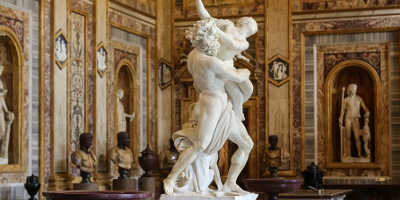The Role of Women in Ancient Rome
Only recently has the role of women in ancient Rome been readdressed, with the role and status of women being obscured by the bias of male writers for years. Now it’s time to make your own judgement!
There has been a struggle involving women’s discrimination throughout history, with a majority of past and present cultures involving some form of sexism embedded in their core ideals. Rome was no exception. Historians and archaeologists have unearthed significant evidence that shows how women were subjugated to different rights, titles, duties, and restrictions compared to their male counterparts.
-
Women in Mythology
Compared to Greek Mythology (and the ancient Greeks in general,) women in ancient Rome were shown little respect or entitlement compared to the female goddesses men worshipped so much. Greek Mythology marked a woman as a secondary creature that came after man. Whereas Roman Mythology did not even depict the gender of the first human ever created, ensuring that it could have been man or woman.
Although mythology these days is considered just that – myth, during ancient Rome, people used mythology to teach people basic moral and educational lessons, allowing it to influence many aspects of their lives. This influence extended to the treatment of women, with Romans using stories from mythology to dictate women’s importance in society and control their worth. Although the stories often illustrated both strong and weak women succeeding in greatness, the stories would often show how easily women could fall at a man’s hand, showing them to be no match for their skill and ability. Amazonian woman, for example, were depicted as the strongest of all women alive in Roman mythology – but their undoing was their foolishness. By choosing to live without men, the Amazon women couldn’t procreate. The story set out to exemplify the women’s foolishness in thinking they could live without men. Another story had a similar tactic in highlighting women’s positive attributes but then reminding listeners or female audiences that their attributes only go so far (not far enough to place them above men). For instance, the Rape of the Sabine Women is a story that highlights how important women were when linking the feuding families of Rome together, restoring peace and balance to society. But the fact that they were kidnapped and raped in the first place shows how weak women are in contrast to man’s great strength. The best they could do in the situation was to accept their new position and seek peace. More than anything these mythological tales promote submission in women, with traits such as vanity and adultery discourage. Those who do transgress are punished with tragic endings.
-
Women in Family Life
In order to prevent any kind of transgression, Roman society confined women to the household and domestic tasks. They were to marry young, produce an heir and look after the household. Most woman married very young, at twenty years old or less, and they had to have no previous sexual history (they had to be a virgin). This was to ensure that their value and innocence remained intact and that there was no chance of them bearing any other children to another man other than their husband. When they did have children, the most senior male figure would control the family or paterfamilias as it was referred to. The paterfamilias had control over the entire family, including both the woman and men. The daughter’s of the family would follow in their mother’s lead, helping with any handicrafts, housework and general upkeep. Being in charge of the household also meant being in charge of the family’s workforce, the children’s education and the husband’s income. And so despite being confined to private life, women held a lot of responsibility in terms of managing the family finances, deciding where and what they spent it on.
-
Women in Ancient Rome Society
When it came to the public sphere however, women had very limited interaction. Documentation and historical findings clearly showed the general segregation of women in public events, workforce, and politics. Women could not vote or run in the political office. With their decision-making controlled by their family, as at times, they were seen as their fathers or husband’s property holdings. A woman who was subjugated to law and finance issues was legally required to nominate a male family member to act in their interests. However, despite this law, there is evidence of women running their own financial affairs due to the male family member’s incompetence or death. Other than that however, women only attended public affairs with their husbands or slaves, and never on their own. They were allowed to attend the public baths, public entertainments and announcements, but no private meetings or places of work.
-
Women and Class
Another things that would determine a woman’s restrictions and freedoms was their status. Highly powerful women, such as Vestal Virgins, were the highest ranking women in Ancient Rome. They were allowed to vote and appear at particular events, things that a regular woman would never dream of attending. Lower class women did appear to have more of a public lifestyle compared to an upper class lady. This was due to necessity though, as they would have to work outside or do their own grocery shopping, which meant going to the market themselves rather than sending a slave on their behalf. Prostitutes and lower-class woman had much fewer rights compared to upper class women, and their existence was poor in comparison. A slave or prostitute had in some ways, more freedom that their upper class sisters, as they did not rely on a man for their living, but this was also a dangerous existence. Having little respect in society and no man to speak for them, these women could be raped with no consequences for their perpetrators. Rape was only considered rape if the woman was owned by another man, as it was seen as doing damage to another man’s property, an attitude which is now very, very outdated. A woman also had no way of disguising their status, as their class was determined by their clothing. Upper-class women, for instance, worse long dresses with their hair tired back, whilst lower-class women could be recognised by their loose hair and togas.
As you can see the life of a woman in Ancient Rome was hard, with fewer freedoms than women are used to today.















